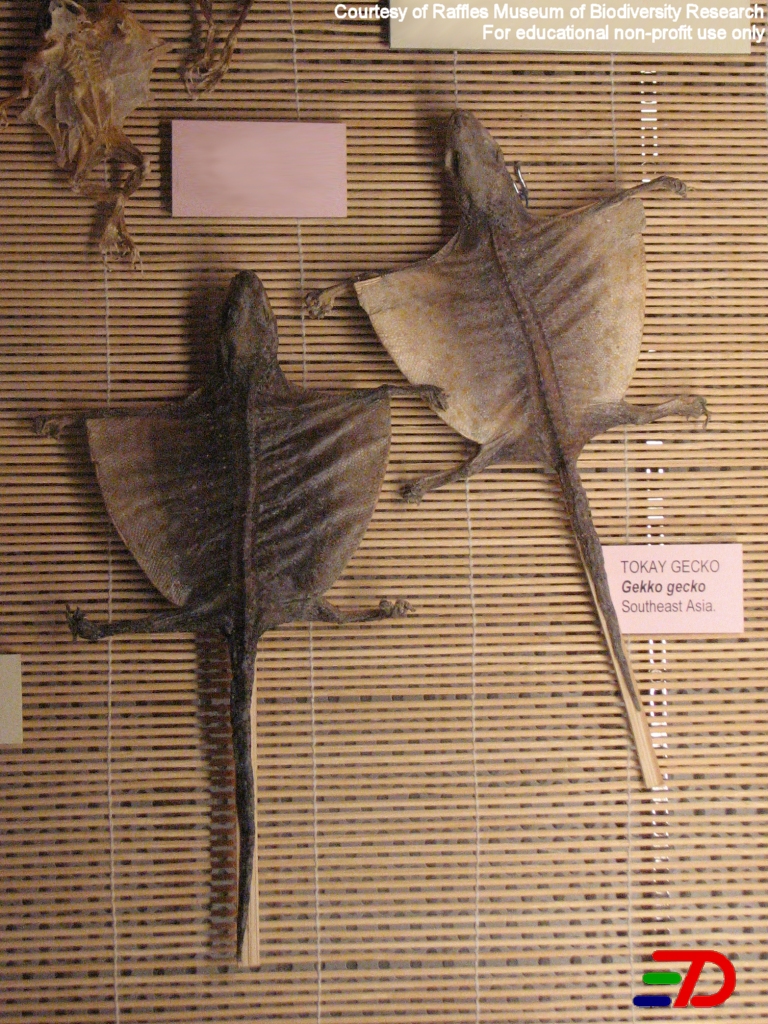This species is truly adaptable; originally a creature of the forest a noted swing to human habitations has been seen. Tokay Geckos in South East Asia particularly are seen as harbingers of luck, fortune and fertility. It is said in Thailand
It must be understood however that the Tokay Gecko does not enjoy this level of protection from humans throughout their range. It is collected in China China
(Zhao & Adler, 1993)
When located in the rainforest during the day they will be hidden in rotten hollow tree limbs of behind loose pieces of bark. Being strictly nocturnal this would make them almost impossible to find during daylight without a large quantity of luck. To further aid the blending process many authors list the ability to change shade and depth of colour to blend into surroundings.
In houses, shops and restaurants Tokay Geckos would be located within the rafters, floor boards of meeting floors and in the roof cavity itself. They actively hunt at night as they hunt insects drawn in by the lights and smell of food and garbage. Tokays have learnt they will not be bothered by humans as they require their extermination powers. As a result in an evening they will hunt with almost reckless abandon, obviously standing out against the white washed ceilings.
* What has still to be established is where the colour morph Tokay geckos are caught, are they forest animals or are they human habitation animals. It would make more sense if they were from human habitations through lack of predation, higher populous within a given area and a sped up birth/reproduction cycle. It could also be the case that relations who have developed heterozygotic traits are more likely to subsequently reproduce and therefore expose a homozygotic colour change than in the forest where their camouflage would be seriously diminished increasing their chances of predation. It has also been suggested although with no evidence to corroborate that the colour morphs Tokays may be separate sub-species or totally separate species. This I feel seems unfounded and although mentioned here merely out of interest I would disregard it until evidence/ research is forth-coming.
| Tokay Bodies for use in Chinese medicine |
 |





